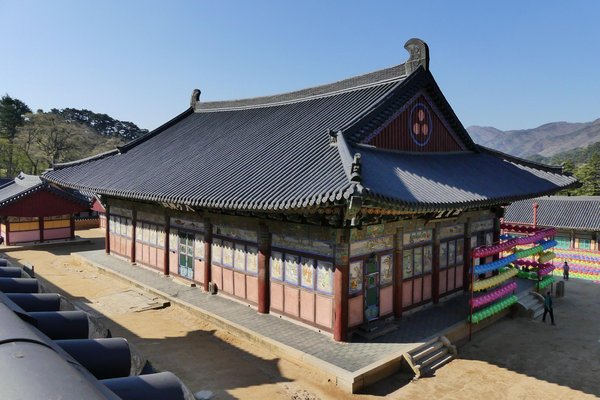Republic of Korea
Haeinsa Temple
Haeinsa Temple Janggyeong Panjeon, the Depositories for the Tripitaka Koreana Woodblocks, preserves the most complete extant collection of Buddhist texts, laws and treaties.
The Janggyeong Panjeon comprises four buildings around a courtyard. They hold the 80,000 finely carved woodblocks from the 13th century in perfect climatic conditions. The Haeinsa Temple complex has become a famous Buddhist pilgrimage destination.
Community Perspective: Tucked away deep in the forest of Gayasan National Park, this is an impressive temple complex. Ian and Clyde were able to stay in the temple overnight as part of the Korean government's Temple stay programme.
Site Info
Official Information
- Full Name
- Haeinsa Temple Janggyeong Panjeon, the Depositories for the Tripitaka Koreana Woodblocks (ID: 737)
- Country
- Republic of Korea
- Status
-
Inscribed 1995
Site history
History of Haeinsa Temple
- 1995: Inscribed
- Inscribed
- Type
- Cultural
- Criteria
- iv
- vi
Links
- UNESCO
- whc.unesco.org
- Official
-
- english.visitkorea.or.kr — Visit Korea
All Links
UNESCO.org
- whc.unesco.org — whc.unesco.org/
Official Website
- english.visitkorea.or.kr — Visit Korea
News Article
- Dec. 15, 2009 koreatimes.co.kr — Korea will celebrate the 1,000th anniversary of the "Tripitaka Koreana" through a 45-day Buddhist cultural festival in 2011.
Community Information
- Community Category
- Religious structure: Buddhist
Travel Information
Gyeongju hotspot
Recent Connections
-
Perfect Inscriptions
1995 -
Mongol Invasions
"The Haeinsa Tripitaka woodblocks were … -
Free entrance
Connections of Haeinsa Temple
- History
-
-
Goryeo
Criterion (vi): The Janggyeong Panjeon and its unique collection of 13th century Tripitaka Koreana woodblocks, outstanding for their artistry and excellent execution of engraving techniques, occupy an exceptional position in the history of Buddhism as the most complete and accurate corpus of Buddhist doctrinal texts in the world. -
Joseon Dynasty
Janggyeong Panjeon, the Depositories for the Tripitaka Koreana Woodblocks "The Depositories stand on granite padstones set on relatively 1ow foundations. These support Pillars topped by simple eaves brackets to support the hipped roofs, which are formed by common rafters and tiles on heavy beams. They are characteristic of early Choson (15th century) wooden architecture and reflect a beautiful harmony in layout, size, balance, and rhythm." - Nomination File -
Mongol Invasions
"The Haeinsa Tripitaka woodblocks were carved in an appeal to the authority of the Buddha in the defense of Korea against the Mongol invasions." (OUV Brief Synthesis)
-
- Architecture
- World Heritage Process
-
-
Perfect Inscriptions
1995
-
- Religion and Belief
-
-
Pagoda
Janggyeong Panjeon, the Depositories of the Tripitaka Koreana Woodblocks (Jeongjungtap) "Three-story pagoda of the Silla period(57 B.C.-A.D. 935) believed to have been built in the ninth century. About 6m tall, it is one of the largest extant pagodas of the period." - Cultural Heritage Administration of Korea (CHA) -
Zen
Haeinsa, one of the main temple of Jongye School of Zen in Korea -
Legends and Folk Myths
Foundation myth of Haeinsa temple in 802 by two enlightened monks. (see link for the story, click on "Unesco World Heritages" and then Haeinsa Temple. Scroll down to section "Temple of Reflections on a Calm Sea")
-
- Constructions
-
-
Prayer Labyrinth
Haeinsa Temple includes a prayer labyrinth near the center of the temple complex. The labyrinth path is lined by lotus flower decorations and leads to a very small pagoda in the center.
-
- WHS on Other Lists
-
-
Memory of the World
Printing woodblocks of the Tripitaka Koreana and miscellaneous Buddhist scriptures -
Cultural WHS set within an IUCN recognised protected area
Gayasan National Park, IUCN category II (National Park)
-
- Timeline
-
-
Built in the 15th century
The Temple dates from the 15th century, the woodblocks it preserves are from the 13th
-
- WHS Hotspots
-
-
Gyeongju hotspot
< than 100km from Gyeongju, personal car is easiest, but the temple can be reached by a combination of bus/train/taxi in 2-3 hours.
-
- Science and Technology
-
-
Libraries
Tripitaka Koreana Woodblocks -
Early Printing
Houses the 81,258 wooden printing blocks from the Tripitaka Koreana
-
- Visiting conditions
News
- koreatimes.co.kr 12/15/2009
- Korea will celebrate the 1,000th a…
Recent Visitors
Visitors of Haeinsa Temple
- AC
- Alexander Lehmann
- Alexander Parsons
- Alex Goh
- Atila Ege
- Bernard Joseph Esposo Guerrero
- Bigboss99
- bossc
- Chantal den Haan
- chenboada
- Cheryl
- Christravelblog
- Clyde
- Colossus
- Corinne Vail
- CugelVance
- cutecid
- cwthong
- Danieljbromberg
- Dimitar Krastev
- DouglasR
- Dr. Caligari
- Elaine McArdle
- Els Slots
- Erik Jelinek
- Errol Neo
- Eva Kisgyorgy
- Fan Yibo
- Frederik Dawson
- GabLabCebu
- Garrett
- GeorgeIng61
- Hadrianus
- Harald T.
- Harry Mitsidis
- henryjiao18
- Iain Jackson
- Ian Cade
- inomusay
- Jacob Choi
- Jarek Pokrzywnicki
- Javier
- J_neveryes
- João Aender
- Joel on the Road
- Jonas Kremer
- Jon Eshuijs
- jxrocky
- Kasper
- Kim, Soo-youn
- Kristin
- krtek
- Kyle Magnuson
- Leonie Geurts
- lichia
- Luboang
- Luis Filipe Gaspar
- Lukasz Palczewski
- Luke LOU
- Maciej Gil
- Martin
- MaYumin
- Michael Turtle
- Mihai Dascalu
- Mikan22
- Miloš Tašković
- nan
- Nihal Ege
- Patrik
- Paul Schofield
- Petteri
- Philipp Peterer
- Pradip Tripathy
- Reza
- Rob Wilson
- Roman Bruehwiler
- Sergio Arjona
- Shandos Cleaver
- Simonh
- Solivagant
- Stanislaw Warwas
- Szucs Tamas
- Thomas Buechler
- Thomas van der Walt
- tony0001
- Vincent Cheung
- voyager
- Walter
- Westwards
- Xiong Wei
- Xiquinho Silva
- Zoë Sheng
- Zos M
Community Reviews
Show full reviews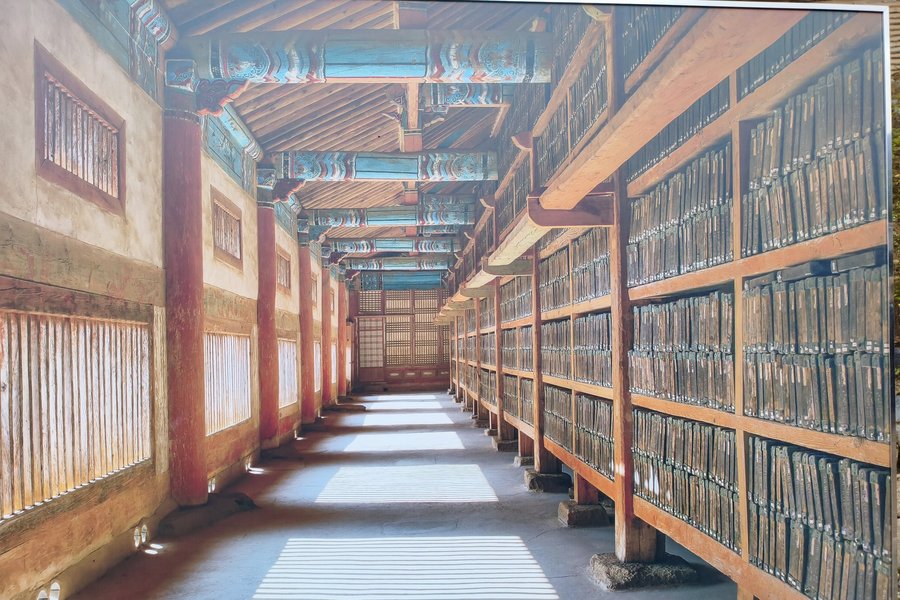
Time of the visit: the 16th of oct.,2025
In the morning I took a KMX train from Busan to Daegu-Dongdaegu,from there I had to take the metro to get to Daegu's Seobu Bus Terminal.There is an hourly bus going to the Haeimsa temple via Goryeong.All buses of that fixed route stop there.
I got off one stop before the final stop, as from there you can walk directly up to the temple complex. The temple is massive and consists of many sub-temples. I first went to the halls where the Tripitaka Koreana is housed, a complete collection of Buddhist scriptures in Chinese language carved onto over 80,000 wooden printing blocks.You can take a look through the wooden bars, but you can't see much.An oversized photo of the interior can be viewed directly outside the storage halls.
I then visited most of the sub-temples.There are two cafes inside the temple premises.I had one needed coffee in one of them.All in all I stayed more or less 3 h inside the temple complex.I missed some of the side temples,but had the feeling that I had seen enough to get a good overview of that whs.Surrounded by beautiful mountains and crossed by beautiful streams, Haeinsa remains an active center of Korean Seon (Zen) Buddhism and a symbol of Korea’s rich cultural and spiritual heritage.Regardless of the high importance for the Koreans and Buddhism in general I for my part found the Tongdosa temple complex near Busan far more impressive.
On the way back …
Keep reading 0 comments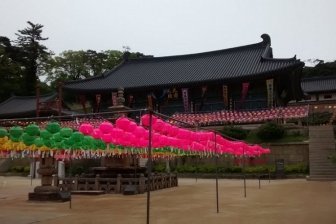
I visited the Heinsa temple in the first week of May 2016. I participated in temple stay program - 1 night 2 days.
I was expecting guided meditation and stuff, but we were allowed to explore and do everything on our own.
It would have been great if it was more organised, guided and if we were informed of the tea with monk timing(I Missed that) and about the meal timings etc.
You are supposed to bow whenever you encounter a monk. Sometimes the elderly monks are friendly and has a small talk with you while you explore the temple.
The temple is famous for its Tripitaka Koreana - the whole of the Buddhist Scriptures carved onto 81,350 wooden printing blocks which have withstood the test f time. The temple has housed them since 1398.
Not sure if they allow the pictures of Tripitaka Koreana. I was told off by the Security. The temple has a stone lantern, a three story stone pagoda in front of the courtyard of the Main hall (Daejeokkwangjeon).
There is a bell pavilion in the first courtyard - consisting of The “Four Instruments” of a Buddhist temple. This include a bell, a drum, a wooden fish and a cloud plate symbolically used as elements for broadcasting Dharma to beings of the earth(bell), beings who are dead (drum), beings of the waters (fish), and beings of the air (cloud).
Do not forget to visit the Hill of scholar there. …
Keep reading 0 comments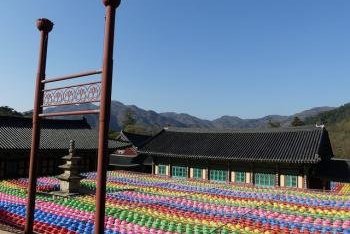
I visited this WHS in April 2017 while following a 2 day 1 night regular program templestay. I enjoyed getting a general overview of meditation and different insights from a Buddhist monk even though my primary aim was to enrich my visit to this WHS and be able to appreciate its OUV without the presence of busloads of tourists.
For this reason I was very pleased with the templestay in general although I'd recommend staying at a less famous mountain temple if possible to get a less touristy approach. I had already experienced Buddhist monastery life in Laos, Myanmar and Nepal and I found them to be much less touristy and more authentic experiences than the templestay in South Korea. Still it is a very interesting experience and a good alternative to the budget accomodation options available near most mountain temples. I enjoyed learning about the temple etiquette that lay Buddhists are supposed to follow.
Haeinsa Temple is located at 400 metres above sea level beneath the Gaya mountain at the heart of the Gayasan National Park. To reach the temple, I caught a bus to Daegu and another bus to Haeinsa proper. If you show your templestay reservation you won't have to pay the entrance fee to the Gayasan National Park which is collected at the toll station on the bus itself nor the entrance ticket to Haeinsa Temple itself. When I visited, the temple was colourfully adorned with prayer lanterns to celebrate Buddha's birthday (picture). The UNESCO stone …
Keep reading 0 comments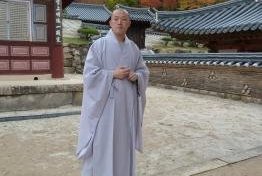
Once or twice every year I try and put a little bit of extra effort into visiting a certain World Heritage Site. This is in the hope that it will reveal a little bit more about the place and also to stop me from getting blasé about consistently visiting some of the ‘most outstanding’ places on earth. This time around the site I picked out for a bit of special treatment was Haeinsa.
I decided to partake in the Korean government's Temple stay programme. I wasn't after some kind of spiritual awakening, just a slightly more unique take on the functions of the temple. And that is precisely what the experience delivered. I stayed for one night, arriving on a very busy Saturday afternoon I was surprised to see just how many people had trekked up through the national park to arrive at the temple. It was the anniversary of the Tripitaka Koreana so the crowds were extra dense, making this by far the busiest WHS I visited in Korea. Although it detracted a little from the atmosphere the people certainly had the right idea.
Staying in the temple overnight allowed me to see the compounds with the tourists gone, leaving only my fellow apprentices to view the life of the monks. The highlight for me was the drumming sessions that took place on the main courtyard on the giant Jingo-buk? (I am not very up on my East Asian drumming techniques but it was very reminiscent of the …
Keep reading 0 comments
Haiensa temple is a very nice place to visit. The limite of the WH site seems to be limited to four wooden building atop the temple complex, which are depositories of the Triptika Koreana. I went in may 2010, not knowing what to expect, since the internet site anouned the site beeing closed for the year. In fact there is no guided visit, but the site not totally closed. You can still view the wooden building from outside. And you can get a glimpse at the woodblock though the windows (slatted windows thourgh which air can penetrate).
I enclosed a picture take through this window. There are signs banning photos, but many of the Korean tourists did not seem to care.
The rest of temple compex is completely open, as is the mountain trails around which allow very nice walks.
I was there on a sunny Sunday afternoon, the temple was overflowed by Korean tourists. But in the late afternoon, the place emptied. And in the evening, the place was almost empty.
You can stay the night in various temple lodge, or to a bigger hotel close by. The village nextdoor is full of nice restaurants.
Keep reading 0 comments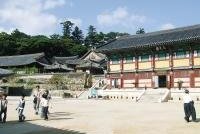
From Seoul there are now fast KTX trains to Dongdaegu, and transferring from that station to the Seobu bus station can be easily effected by taking the metro to Seondangmot.
On the bus ride to Gayasan National Park I met up with a number of fellow travellers, both foreign and local. None of these prepared me for the climb up to the site. But the effort was worth it to say the least. To see such an important facet of Korean history up close was indeed a privilege.
Keep reading 0 comments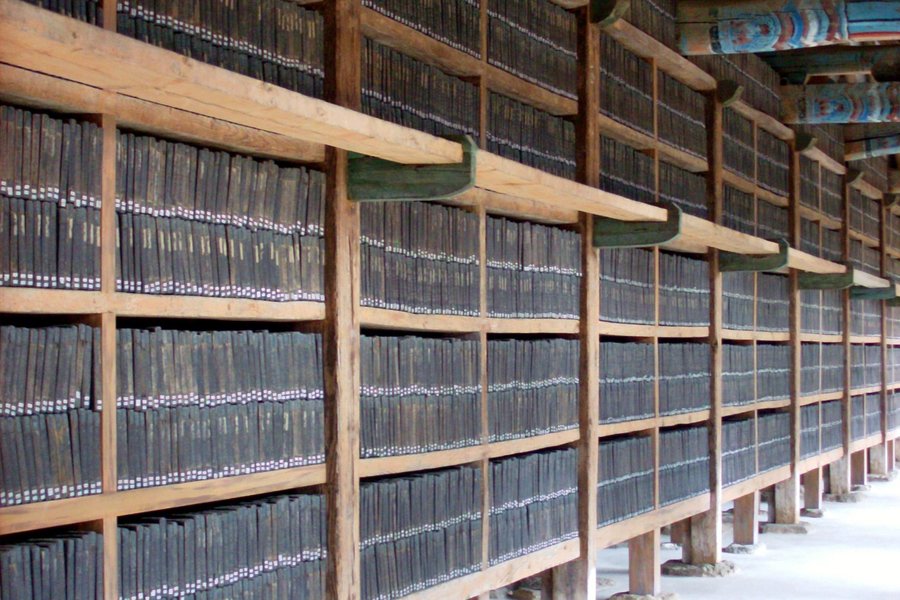
One of the great temples in Korea, Haeinsa is located in Gayasan National Park about an hour Southwest of Daegu. The temple itself is worth exploring, but the woodblocks is what makes Haeinsa truly special. The number of woodblocks is exceptional and considering that these Buddhist sutras are numerous centuries old is something to marvel at. Indeed, these treasures were commissioned during the Goryeo Dynasty. Plan additional time getting to the temple as its a bit out of the way.
In addition to basic logistics, there are factors worth considering. Haeinsa is a historic temple, but by no means is it the most authentic, exceptional, or representative Korean Buddhist temple. Its OUV lies primarily in the Janggyeongpanjeon, which was constructed to house the Tripitaka Koreana woodblocks.
Despite two visits, I have relatively few photos and this reflects the reality, you are not supposed to take photos of the woodblocks. Moreover, the Janggyeongpanjeon Depositories are functional and well-designed, but the exteriors are not necessarily a great photograph subject. So, while I did not take numerous photographs as I did at Hwaeomsa Temple, I loved spending time exploring Haeinsa.
Keep reading 0 comments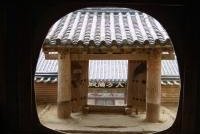
Tuck away deep in the forest of Gayasan National Park is Haeinsa, one of the three most important Buddhist temples in South Korea and maybe the second most famous temple in this country after Bulguksa Temple in nearby Gyeongju. As I mentioned Haeinsa is located in the national park, the scenery especially along the path to the temple is very beautiful with small steams and many tiny waterfalls in the very bright green forest, a real reward after taking 1.30 hour bus from Daegu thru many uninspired villages.
The temple itself is quite big compared to other temple complexes. The most important structure in the temple is Janggyeon Panjeon the temple’s depositories for the Tripitaka Koreana woodblocks or Korean Buddhist bible. Janggyeon Panjeon is actually four plain storage buildings from 15th century keeping more than 80,000 woodblocks famously for its sophisticate design of conservative preserving all of the 13th century woodblocks without deteriorates. The masterly technique of this building is truly exceptional; however, for normal tourists it is really hard to appreciate these structures since there is no explanation for their uniqueness to differ them from other old buildings which is quite sad.
Since most people do not know the importance of the buildings or it’s just quite hard to appreciate them, the equally impressive Tripitaka woodblocks are the main focal point of Haeinsa. The woodblocks took 16 years to complete and now Haeinsa’s Tripitaka is considered the most complete set of Tripitaka woodblocks in the world and …
Keep reading 0 comments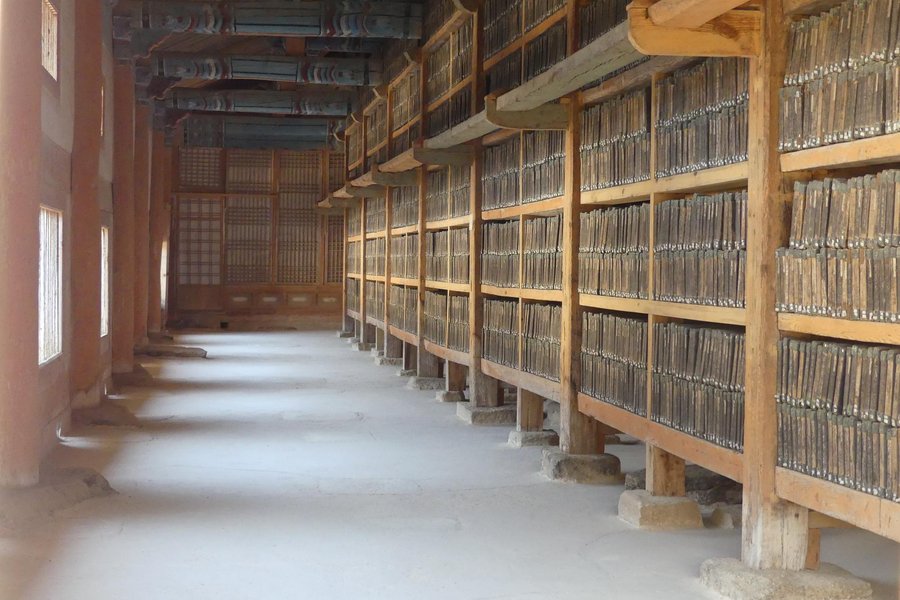
On March 28th, 2003 I walked from a Korean yogwan (travelers' inn) located near Haeinsa, up the path to the temple. I brought my two elementary school age sons with me to give them a feel for the Korean countryside, as well as the opportunity to see a Korean Buddhist temple and renowned collection of Buddhist literature. The inn itself was worth the visit for its wide "maru" porch and delightful dinner of "kimchee" dishes made from all kinds of roots, vegetables and seaweed. Sanjang Byeoljang is its name.
We had a brilliant cool day. The magnolia and cherry trees were not yet blooming at the temple's altitude, but the air was clear and there were only a few groups of visitors spaced out throughout the temple, so there was no crowding and everyone got a good look at the Buddha Hall and the wood blocks.
I visited the temple almost thirty years ago for the first time, and it is certainly in very good condition now. The monks on this visit were deep in meditation and conducting sutra chants in all the halls, even the smallest ancilliary buildings had a monk beating a wooden bell and chanting. An older monk came out of a small building just above the Buddha Hall and spoke with my sons. He made them promise not to fight and to treat each other with respect. He performed the promise handshake with each of them, linking little fingers and pressing the thumbs together. A promise …
Keep reading 0 comments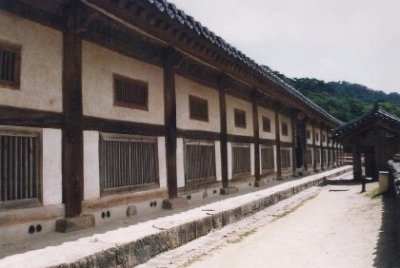
This is probably the best sight I have seen in Korea. Beautifully located in the mountains (in a national park actually), miles from everywhere. Haeinsa is a big and colourful temple complex. There is a lot to see and to do in the area.
The wooden blocks are of course the main point of interest. They are housed in 4 buildings behind the main temple. You can look at them via the windows.
Remarkably, the blocks are still in their original housing, and due to the way of construction, they are well preserved. A few years ago a new building was erected for them, but the condition of the carved blocks started deteriorating quickly. So they moved them back, to their original places.
Keep reading 0 comments
